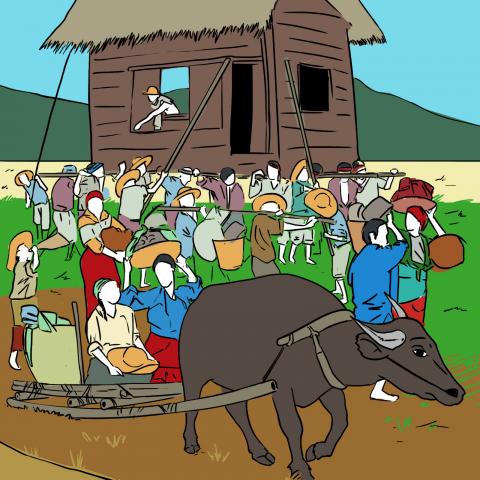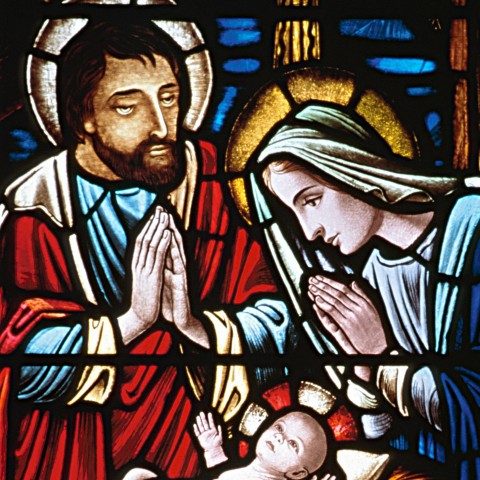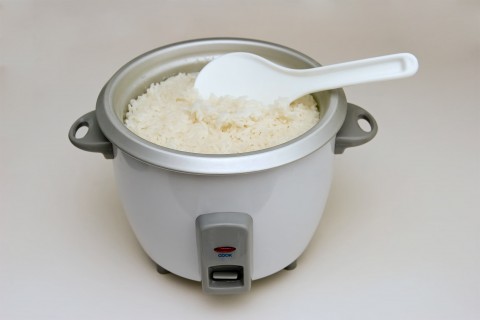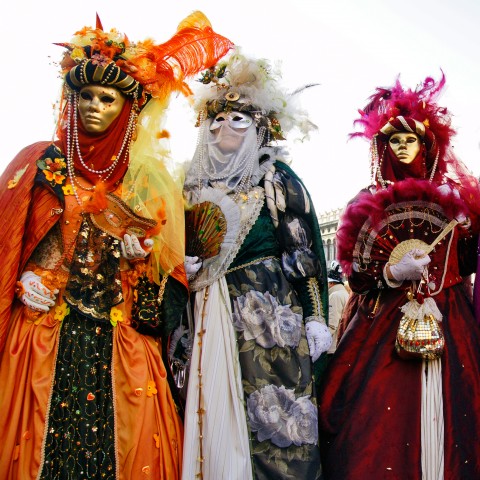
Studying and learning about different cultures helps us understand why certain groups of people see the world the way they do. If you’re studying the Filipino language, it makes sense to gain a deeper understanding of the Filipino culture, as well. Doing so will help you better appreciate every new Filipino word or expression you learn.
The Filipino culture is quite complex, having been influenced by many different cultures. Each value and belief is applied to people’s daily lives, revealing how significant the nation’s history is. Yet despite the impact of other cultures on the character and behavior of Filipinos, it’s interesting to know that there are still many values unique to this group of people. Thus the expression Onli in da Pilipins (“Only in the Philippines”).
Come with me, and together let us discover the values, beliefs, customs, and traditions that make the Filipino people who they are.
 Table of Contents
Table of Contents
- Values and Beliefs
- Philosophy and Religion
- Family and Work
- Art
- Food
- Traditional Holidays
- Gain a Deeper Understanding of Filipino Culture with FilipinoPod101
1. Values and Beliefs
Filipino culture and traditions are founded on several shared values and beliefs, a few of which we’ll cover here.
A- Filipino Hospitality
Hospitality is a trademark of the Filipino people, and one can argue that there are no people in the world more hospitable than the Filipinos. Visit the country and you’ll be amazed at how welcoming the people are. What’s amazing is that this trait of kindness toward visitors is not confined to those who can afford to offer welcome gifts in the form of food and entertainment. Even the not-so-rich would be willing to offer their last plate of rice to a stranger visiting their little shack.
B- Regionalism
Filipinos are known for being regionalistic. It’s said that this value was promoted during the Spanish era to keep the Filipinos divided, thus making it easier to manipulate them. Whether this is true or not, it’s clear that Filipinos hold on to this value dearly, claiming that their region is better than others—or even the best in the country. This can be viewed as a negative trait, and true enough, this particular value system has caused a lot of negativity, especially when politics are brought into the picture. But if you look at it from another perspective, it’s simply proof that Filipinos value that which belongs to their fold.
C- Bayanihan
Filipino culture values bayanihan, or the concept of teamwork. It refers to a community of Filipinos coming together for a cause. The term is derived from bayan, which is Tagalog for “country” or “community.” In the past, the term was used to describe the house-moving tradition in rural areas of the Philippines, where a group of about twenty young men would volunteer to carry the house of a certain family to a new location. Most of these houses were made of nipa and other lightweight, indigenous materials. To express their gratitude, the family would prepare food for the volunteers to share. Today, the bayanihan spirit remains alive, which is evident in the way many Filipinos volunteer to help fellowmen who are in need.

Bayanihan
D- Adaptability
One cannot overemphasize the fact that Filipinos are adaptable. They can easily adjust to any culture or situation, which is evidenced by the fact that there is a Filipino community in every major country or city in the world. Send them to a foreign country and they’ll soon be speaking the language fluently. Send them to a place where no Filipino has ever set foot, and soon there will be a Filipino community flourishing. This ability to adapt helps them make do with what little they have and find joy even in the simple things. It’s because of this outstanding trait that Filipinos find it easy to make a mark in the world.
E- Humor
Humor plays a huge role in Filipino culture. I’m not talking about jokes and comedy per se, but the ability of the Filipino people to find joy and humor in even the direst of situations. Yes, Pinoys make jokes all the time—whether among family, friends, or strangers. The jokes could be about anything, too—a new colleague, the family next door, politics. Filipino humor goes beyond those things, though. Even in the midst of a crisis, you can expect Filipinos to find ways to make light of the situation. Whether it’s a typhoon, an earthquake, or even a pandemic, no misadventure can crush the Filipino spirit.
2. Philosophy and Religion
Two of the major Filipino culture characteristics are its strong religious community and its superstitious nature. Let’s briefly look at a few common philosophies and beliefs!
A- Hiya & Utang na Loob
The Filipino concept of hiya, translated as “shame” or “embarrassment,” has always been seen in a negative light. It’s at the core of another Filipino concept: utang na loob, or indebtedness.
Utang means “debt,” and loob means “inside,” although in this case, it refers to “inner self.” When you owe someone a favor, you feel deep inside that you need to return it someday, one way or another. And that’s where hiya comes in. Only Filipinos who carry this virtue will understand the concept of indebtedness and the importance of returning favors.
But then there is also hiya apart from the sense of indebtedness. It’s a gut feeling that you have when you’re in a certain situation and you know you’ve got what it takes to contribute and make a positive impact:
Nakakahiya naman kung hindi ko iaalay ang aking sarili para sa aking bayan.
“What a shame it would be if I didn’t offer myself in the service of my country.”
Seen from this perspective, hiya is a virtue, the act of setting aside one’s own desires for the benefit of other people.
B- Bahala Na Mentality: A Double-Edged Sword
The pre-colonial Filipino mentality of bahala na translates to “it’s up to you” in English. It’s said that it was derived from the expression Bathala na (“It’s up to Bathala“), Bathala being the god the native Filipinos worshipped. For example:
Wala na tayong pambili ng bigas. Bahala na ang Diyos sa atin.
“We have no money left to buy rice. May God have mercy on us.”
It’s a double-edged sword in the sense that it expresses faith and trust on the one hand, and on the other it expresses mediocrity. Filipinos are creative and hardworking, but many of us sometimes choose to sit and wait for some higher power to solve our problems with us.
C- Filipino Superstitions
Filipinos are arguably the most superstitious people on the planet. They tend to believe things that would seem illogical to people of other cultures. This is not surprising, though, since Filipinos are also very religious. One would think that people would be more rational in this day and age, yet superstitions still play a huge role in the daily lives of the Filipinos:
- Sweeping the floor at night will sweep good fortune out of the household.
- Serving pancit (noodles) during celebrations will promote long life.
- It’s bad luck for siblings to get married in the same year.
- Don’t go home immediately after attending a wake to “shake off” evil spirits.
These are just some of the hundreds or even thousands of superstitions that many Filipinos still hold on to even to this day. There may be downsides to believing in superstitions, but to believers, they help promote and maintain a positive mental attitude.
D- Christianity in the Philippines
The Philippines is dubbed as the only “Christian” nation in Southeast Asia and is ranked as the fifth most Christian country in the world. It’s not because all of its people are Christians, but because 93% are. Filipinos are among the most religious people in the world, which is not surprising considering their strong superstitious nature.

Filipinos are a very religious people.
- → Familiarize yourself with the most common Tagalog words associated with religion.
3. Family and Work
There are a few key Filipino cultural traits related to family and work that will help you better understand the nation as a whole. Let’s take a look.
A- Family Ties
A pillar of Filipino culture, family values tend to promote strong familial ties. The hospitality of the Filipino people is not only seen in how they treat their guests, but also in how they treat their family members. In the Philippines, it’s common for households to be made up of extended family members. This means that families are not only composed of the parents and their children, but also of grandparents, uncles, aunts, cousins, and nephews.
In other cultures, when a person turns eighteen, they are considered an adult and encouraged to live on their own, away from their family. But in Filipino culture, living with parents until the day one gets married is considered the norm. One advantage of this practice is that elderly Filipinos seldom worry about being sent to nursing homes. A huge drawback, though, is the issue of family members meddling in each other’s affairs. For Filipinos, however, the feeling of satisfaction and security that a huge family brings outweighs any disadvantage that may come with having an extended family.
B- Filipino Children as Retirement Plans
This is not something Filipinos should be proud of, but unfortunately, it’s a common mindset of many Filipino parents today that one of the purposes of bearing children is to have someone to take care of them financially when they grow old. This is based on the philosophy of hiya and utang na loob. This wasn’t always the case, though. In the past, Filipino parents would opt to have dozens of children, not primarily as retirement plans, but as assurance that someone would continue the family business when they’re gone.
C- Pride and Modesty at Work
Filipinos, like most Asian people, value the concept of “saving one’s face,” which means they’ll go out of their way to make sure people won’t think bad about them. This is very evident in the workplace, where the Filipino worker would do his best to avoid embarrassing situations and to make sure his reputation is not compromised.
Filipinos also take pride in their work, but above all else, they value relationships. This is why they prefer work environments that are welcoming and friendly.
- → Expand your vocabulary with this list of important Tagalog words used in the workplace.
D- Crab Mentality
Crab mentality is not unique to the Filipino people, but this kind of mindset has been associated with Pinoys over the past few decades, particularly among communities of Overseas Contract Workers. The concept is derived from the instinct of talangka (“crabs”) to pull their fellows down with their claws while trying to get out of the bucket with which they were caught.
This culture of infighting often prevents Filipinos from achieving unity. You’ll hear unfortunate stories of Filipinos working abroad scamming and betraying their fellows in their desire to stay ahead of them.
E- Sipag at Tiyaga
Despite all the negative values associated with the Filipino worker—such as being tamad (“lazy”) and palaging late (“always late”), or their love of tsismosa (“gossip”)—there is no question that Filipinos are among the most hardworking people in the world. That is because they value sipag at tiyaga (“hard work and perseverance”). They’re also dependable and responsible, traits that can be attributed to their having a sense of filial obligation (the responsibility to take care of people who depend on them).

Filipinos place a huge value on sipag at tiyaga (“hard work and perseverance”).
4. Art
In Filipino culture, art reflects the nation’s diversity. The Malays, Chinese, Indians, Muslims—all these cultures have had a huge influence on Filipino art.
A- Music & Dance
Music in the Philippines has evolved so much in the last several centuries. Before the Spanish came, Filipino music was limited to folk songs, which reflected the life of rural Filipinos. Many of the traditional Filipino songs also have a strong connection with nature and are often accompanied by gongs and chimes.
Filipino dance has evolved in the same way, beginning with indigenous dances of different ethnic groups and eventually evolving with modern society. The era of the Americans in the Philippines has seen the gradual introduction of more dynamic dances, which the Filipinos incorporated into their own. Before the rise of American and European dances in the country, however, there were the Tinikling (“bamboo dance”), Cariñosa, and Maglalatik, folk dances that continue to show the diverse culture of the Philippines.
- → Here’s a lesson to help you learn Tagalog words and phrases related to music.
B- Visual Arts
The earliest Filipino paintings can be found in pre-Spanish ritual pottery, such as the Manunggul jar, a burial jar excavated from the Tabon Caves in Palawan. Early Filipinos, such as the Pintados (tattooed indigenous Visayan tribes), also manifested their talent in painting through tattoos. In the sixteenth century, artistic paintings were introduced to the country when the Spaniards arrived. A century later, Filipinos started producing paintings in the European tradition using a mixture of landscape, religious, and political inspirations.
Damian Domingo created various religious paintings, while Juan Luna and Felix Hidalgo were both known for their political art pieces. Fernando Amorsolo, on the other hand, utilized postmodernism in his paintings, which depicted Filipino culture.
Many of Fernando Amorsolo’s sketches are on display at the Philippine National Museum of Fine Arts.
C- Architecture
Before any other culture arrived in the country, Filipino architecture was limited to the bahay kubo (nipa huts) built using indigenous materials like bamboo and coconut. The bahay kubo was gradually replaced by the bahay na bato (stone houses) when the Europeans came. Only the nobles could afford this more expensive architecture, though, and the peasants remained in their nipa huts.
Today, most of the historic structures you’ll see in the country have not only Spanish influences, but also Austronesian, Chinese, and American influences. Looking at the architecture of old and new Catholic churches in the country, however, it’s clear how much influence the Spaniards have had in Filipino architecture.
5. Food
Filipino culture and food go hand in hand. Food culture in the Philippines has been heavily influenced by Westerners, but Filipinos have still been able to preserve important culinary traditions.
Eating Like a True Filipino
The typical Filipino eats five times a day. There’s breakfast, lunch, and dinner, and snacks referred to as merienda, eaten in-between the three main meals. Rice is the main ingredient in any Filipino meal. And unlike in Western cultures, the courses—kanin (“rice”), ulam (meat or seafood eaten with rice), and sawsawan (“dip”)—are served simultaneously.
The Filipinos have adopted the Western way of eating, that is, with spoons, forks, and knives. Still, the Filipinos have never forgotten the practice of eating with their hands. This practice is often associated with poor families who can’t afford to buy utensils, but the truth is, all Filipinos whether rich or poor understand that nothing is more appetizing than eating with your bare hands.

In the Philippines, rice makes the world go round. No. In the Philippines, rice is life.
6. Traditional Holidays
The Philippines is heavily influenced by Roman Catholic traditions, with 86% of its people belonging to the said religion. There are holidays based on major events and celebrations that are non-religious in nature, but most of the holidays in the country are related to religion. The Ati-atihan, Dinagyang, and Sinulog festivals, for instance, are all celebrated in honor of the Santo Niño, a Spanish term Roman Catholics use to refer to the Christ Child.
A- Ati-Atihan
The Ati-atihan is held every January and is observed in several towns in Aklan, Panay. The term means “to imitate the Ati,” with Ati referring to the local name of the Aeta people who are believed to have been the first settlers on the island. The festival was given a Christian meaning later on, with the people incorporating the Santo Niño into the festivities. During the main day of the festival, dance groups wearing body paint and colorful costumes march on the streets, dancing to music produced by marching bands. Ati-atihan is referred to as “The Mother of All Festivals” in the Philippines, having influenced other festivals in the country (including Dinagyang and Sinulog).
B- Dinagyang
If Ati-atihan is the Mother of All Festivals, Dinagyang is “The Queen of All Festivals.” That’s because even if it was only inspired by the Ati-atihan festival, it has become more successful in building a reputation for itself as a tourist attraction. Perhaps it’s because the festival is held in Iloilo City, the most urbanized city on the island of Panay. During the week of the festival, over 200,000 tourists—including local celebrities and politicians—visit the city.
Just like Ati-atihan, Dinagyang is celebrated every January, particularly during the fourth Sunday of the month. The three-day affair consists of religious processions, too, but its highlights are the street dance competition and the food festival.
C- Sinulog
Sinulog is another major festival held in honor of the Santo Niño, this time in Cebu. Just like the Ati-atihan and Dinagyang, it’s celebrated every January and attracts up to two million people from over the country. The religious aspect is to be expected of the festival, but aside from that, what makes this a much-celebrated event are the street parties and the Sinulog dance competition.
D- Masskara
The Masskara festival is a major festival held every October in Bacolod City. The term is a pun on the word maskara, which is Filipino for “mask.” It’s also a blending of the English word “mass,” referring to a large group of people, and the Spanish cara, which means “face.” The government started the festival in 1980 to encourage its people during a time of economic crisis. Today, the Mardi Gras-like festival is one of the most popular festivals in the Philippines, with its street dances, live music, and food fests witnessed by thousands of locals and tourists.
E- Panagbenga Flower Festival
The Panagbenga Flower Festival is held every February in Baguio City. It was started as a tribute to the flowers of the city, as well as a way to encourage the people to rise up from the tragedy of the devastating Luzon earthquake in 1990. The term Panagbenga is of Kankanaey origin, and means “A time of blossoming” or “A season of blooming.” The Panagbenga Flower Festival is a month-long festival celebrated with colorful costumes, native dancing, and parades.
F- Lenten Season
The Lenten Season is the most significant religious observance in the country. It starts on Ash Wednesday, which is forty days before Easter Sunday. It’s on this day that you’ll see Catholics returning from church with their foreheads marked with a cross made of ash. The highlight of the season is the Holy Week, referred to as Semana Santa, which begins on Palm Sunday and culminates on Easter Sunday.
The highlight of the week is Good Friday, which is a solemn day that both Catholics and Protestants consider to be a day of much prayer and fasting. Superstitious Catholics, in particular, believe that Jesus Christ is actually dead during this time of the year and warn people against getting hurt. Any wounds acquired during Good Friday, according to them, will never heal. Some say you will have to wait until the next Holy Week for it to heal.
G- Christmas Season
The Christmas season in the Philippines officially starts on December 16, the first day of Simbang Gabi, a nine-day series of masses occurring as early as three o’clock in the morning. For most Filipinos, however, Christmas unofficially starts on the first day of September (the first month on the calendar that ends in –ber), and ends on January 6 (the day of the feast of the Three Kings, otherwise known as the Epiphany).
Starting September 1, you’ll see many houses decorated with Christmas lights, Christmas wreaths, and what is known as the Christmas Parol, a star-shaped lantern. During the week of the Simbang Gabi, Catholic churchgoers can be seen flocking to the churches at dawn. It’s also during this time that the famous Puto Bumbong (purple rice cake steamed in small bamboo tubes) will start being sold outside of churches.
In the Philippines, Noche Buena is the most exciting part of Christmas. It’s Spanish for “Good night,” but in the Philippines, it’s the night before Christmas. This is a time when family members gather and share a meal after hearing the midnight Mass.
- → Check out our list of must-know Christmas Day vocabulary!
H- Feast of the Black Nazarene
The Feast of the Black Nazarene is the ultimate symbol of religiosity in the Philippines. Every year on January 9, millions of devout followers of the Poong Itim na Nazareno (Almighty Black Nazarene) gather in the streets of Manila to join in the procession of a life-size black Jesus statue carrying the cross. The procession usually starts at Rizal Park and ends at the minor basilica in Quiapo. Few religious celebrations worldwide can match the Feast of the Black Nazarene, with millions of devotees doing all they can to get a hold of the statue, believing that it can perform miracles, such as granting petitions and healing terminal diseases.

Traditional Filipino festivals, such as Dinagyang, Sinulog, and Masskara are celebrated in Mardi Gras fashion.
7. Gain a Deeper Understanding of Filipino Culture with FilipinoPod101
We’ve only touched the tip of the iceberg with this Filipino culture overview. There’s still a lot more you can learn about how Filipinos think about and perceive the world, and one good place you can start is FilipinoPod101.com.
FilipinoPod101 is one of the best places to learn the Tagalog language online, and in addition to our free resources and our grammar lessons, we also offer all you need to better understand and appreciate Filipino culture.
Sign up today and enjoy a number of exclusive learning materials, including our Premium PLUS MyTeacher feature where you can have one-on-one interactions with your personal Filipino teacher. He or she will provide you with ongoing guidance and assessment as you continue enhancing your Filipino skills.
That’s all for this post! Don’t think twice about dropping a comment below should you have any questions about what we’ve shared here or if you have any additional insights!











